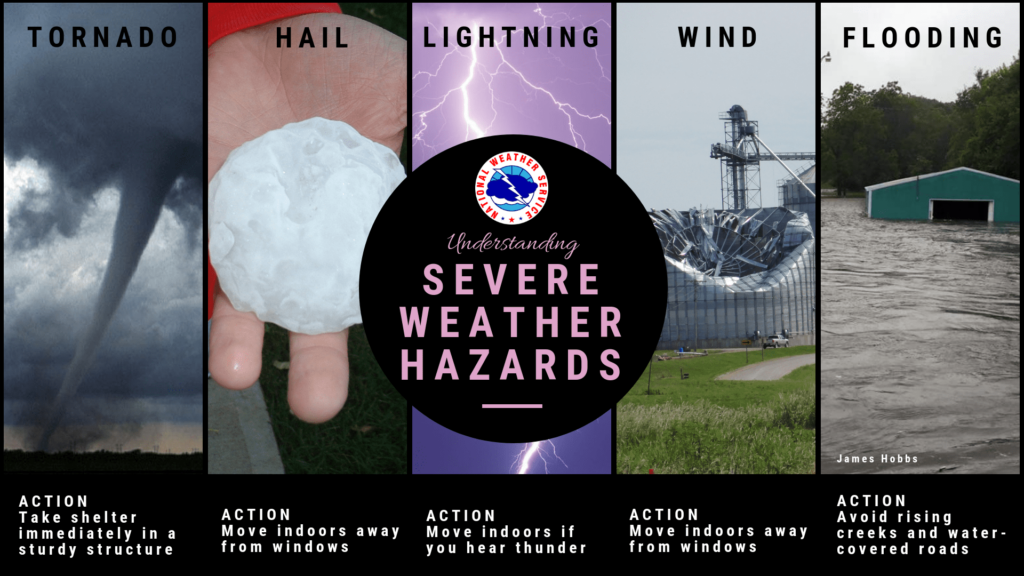NORTH HAVEN, Conn. — Chief Januszewski and the North Haven Fire Department would like to provide residents with safety tips regarding severe weather events.
According to The Weather Channel, fall can be a second season for severe weather due to the change in seasons as the northern part of the U.S. cools off. The risk of severe weather lessens as the Atlantic hurricane season winds down toward the end of November.
“The spring and summer months are most often considered the severe weather months,” Chief Januszewski said. “But, people should be aware that severe weather danger doesn’t end along with the end of summer.”
To protect your family and your property, Chief Januszewski and the North Haven Fire Department recommend following safety tips outlined by the National Weather Service:
Lightning Safety
- There is no safe place outside when thunderstorms are in the area. If you hear thunder, you are likely within striking distance of the storm. Always find a safe place indoors when you hear thunder.
- Plan ahead by being aware of any risk of thunderstorms. The best way for you to protect yourself from lightning is to avoid the threat. Cancel or postpone activities early if thunderstorms are expected. Monitor weather conditions and get to a safe place before the weather becomes threatening.
- Avoid open fields and being at the top of a hill or ridge. Stay away from tall, isolated trees or other tall objects. If you are in a forest, stay near a lower stand of trees.
- If you are camping in an open area, set up camp in a valley, ravine or other low area. A tent offers NO protection from lighting.
- Stay away from water, wet items and metal objects such as fences and poles. Water and metal do not attract lightning but they are powerful conductors of electricity.
- Do not touch anything that is plugged into an electrical outlet, plumbing or corded phones. Cell phones and cordless phones are safe.
- If someone is struck by lightning, they may need immediate medical attention. Lightning victims do not carry an electrical charge and are safe to touch. Call 911 and monitor the victim.
Flood Safety
- Flash floods can occur within minutes and sometimes without any sign of rain.
- Use sandbags or other materials to protect your home from flood waters if you have time to do so. Check your insurance policies as many standard homeowners policies don’t cover flooding.
- Have an emergency kit prepared. It is good practice to have enough food, water and medicine to last at least three days. You should also have batteries, blankets, flashlights, first aid kit, rubber boots, rubber gloves and a battery operated radio.
- Monitor local radio and television stations. Evacuate immediately when water starts to rise. Don’t wait to be ordered to leave. If you have pets, take them with you or make arrangements to board them at a facility away from flooding danger.
- Do NOT walk through flood waters. It only takes six inches of moving water to knock you off your feet.
- Do NOT drive into flooded roadways or around a barricade. A vehicle caught in swiftly moving water can be swept away in seconds. Water may be deeper than it appears and can hide hazards such as sharp objects, washed out road surfaces, electrical wires, chemicals, etc.
Tornado Safety
- A basement below ground level or the lowest floor of a building is safest. A secondary option is a small interior room, such as a closet, bathroom or interior hall on the lowest level. Put as many walls between yourself and the outside as possible and avoid windows.
- If possible, get under something sturdy like a heavy table. Protect yourself from flying debris with pillows, heavy coats or blankets.
- In mobile homes: leave well in advance of the approaching severe weather and go to a strong building. If there is no shelter nearby, get into the nearest ditch, low spot or underground culvert. Lie flat, and cover your head with your hands for protection.
- If caught outside, find shelter in a ditch or remain in your vehicle and cover your head for protection. Do not take shelter under a highway overpass because wind speeds can increase due to a tunneling effect.
- Tornadoes could come at nighttime or be obscured by rainfall. Do not wait until you see or hear a tornado to get to safety.
In severe weather situations, it is also important to know the difference between a weather watch and warning. A watch means there is a chance a specific weather condition will happen. A warning means the specific weather condition is already occurring or is very likely to occur and you should seek safety immediately.
###

